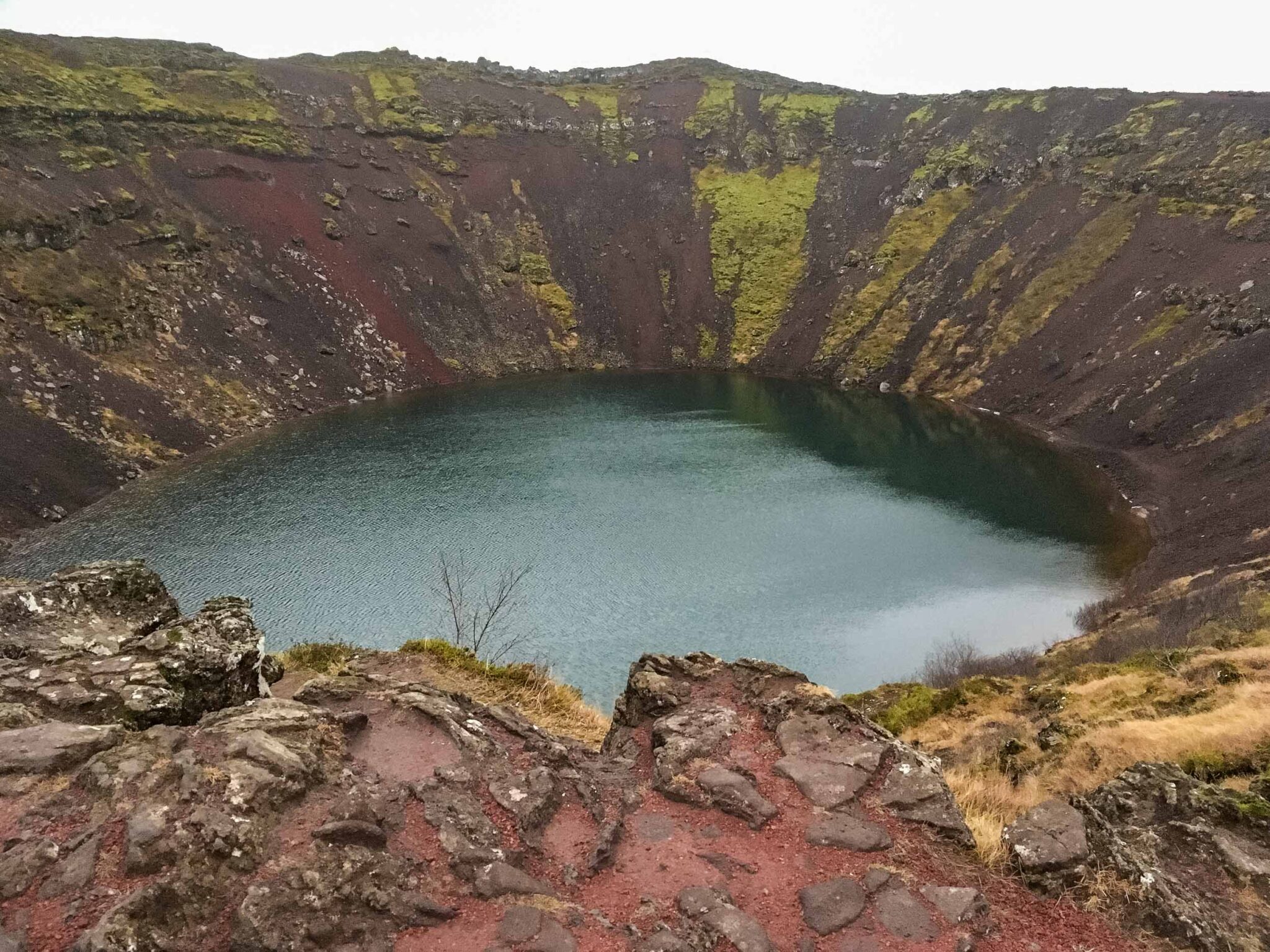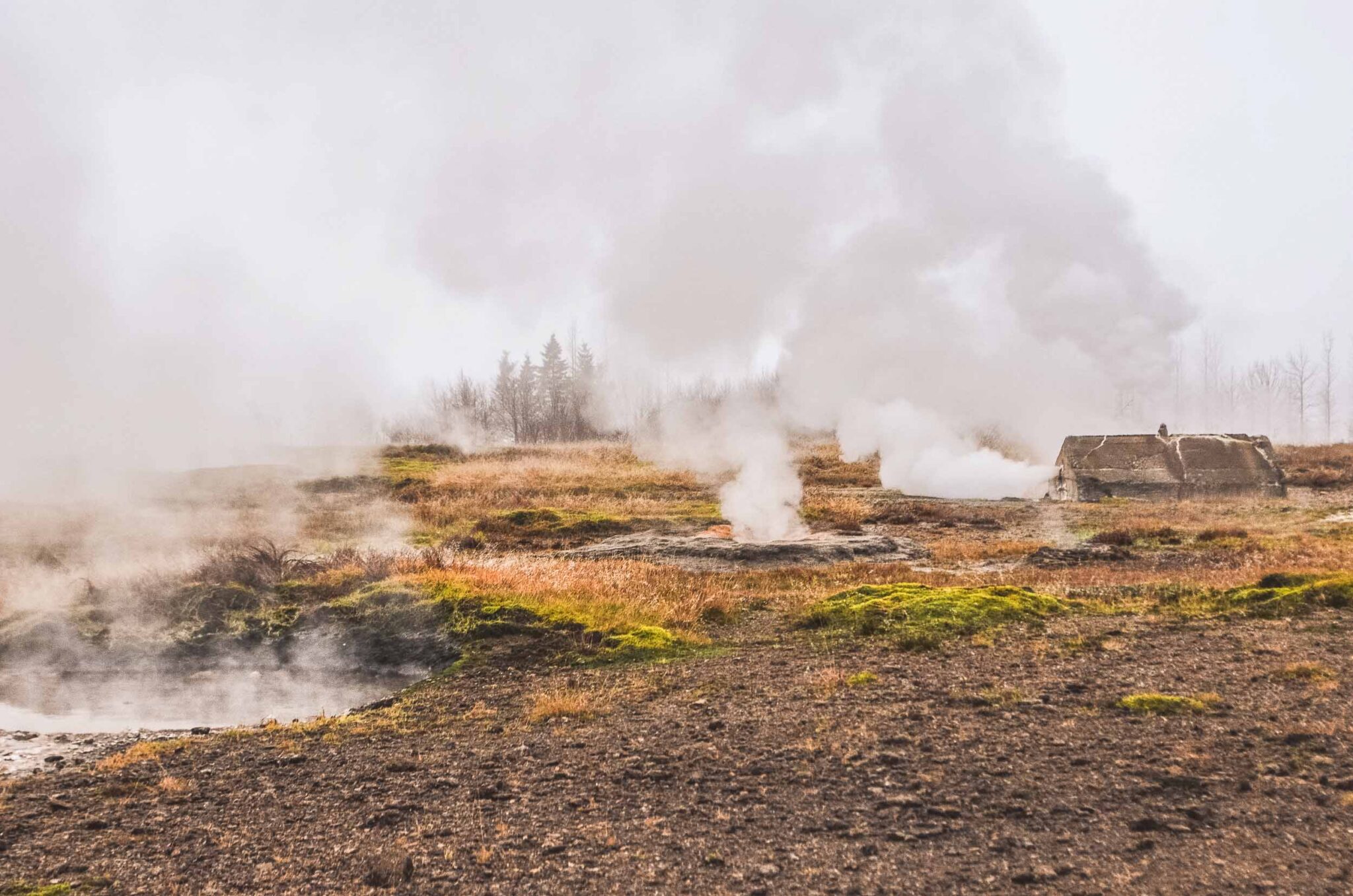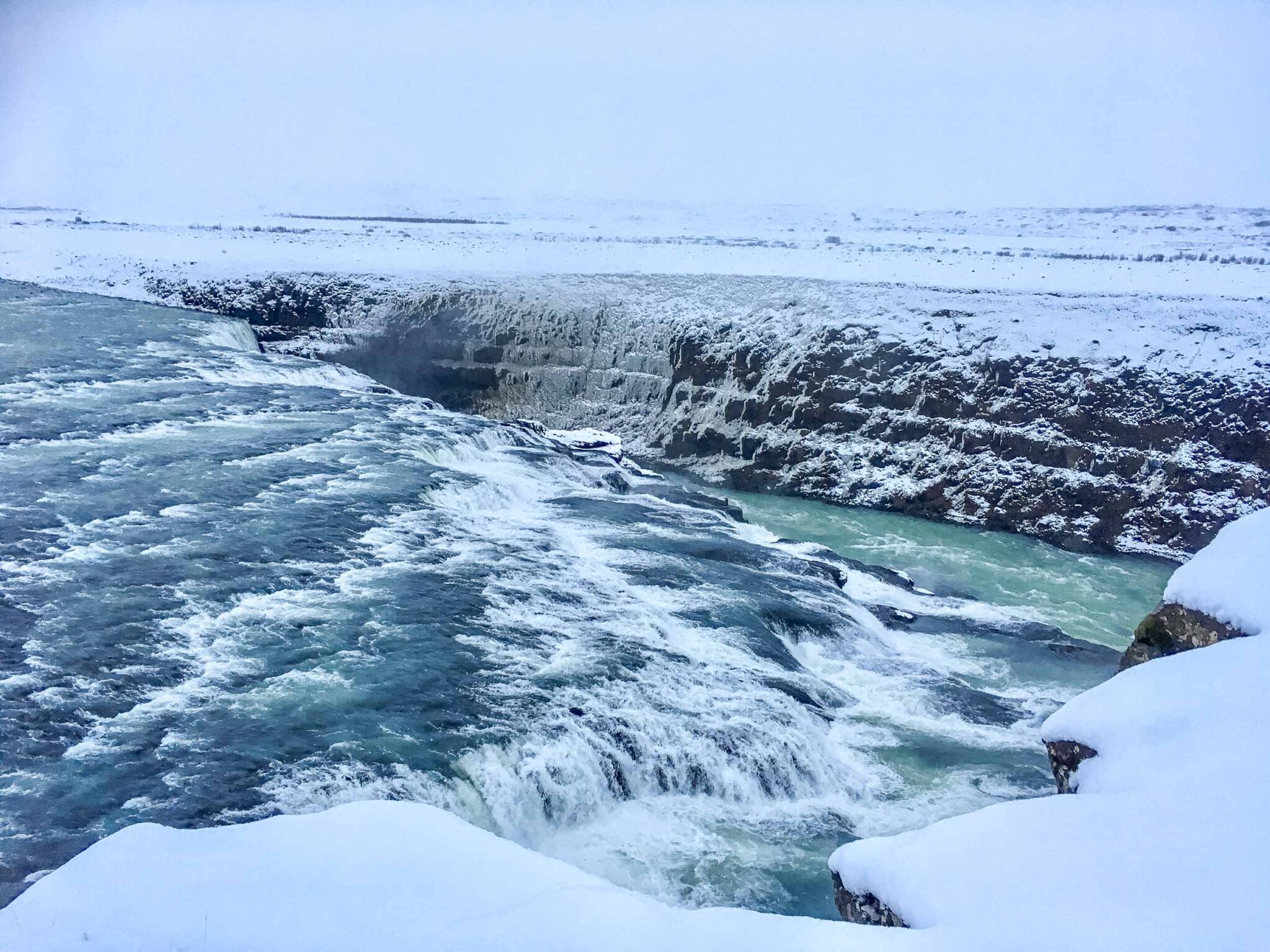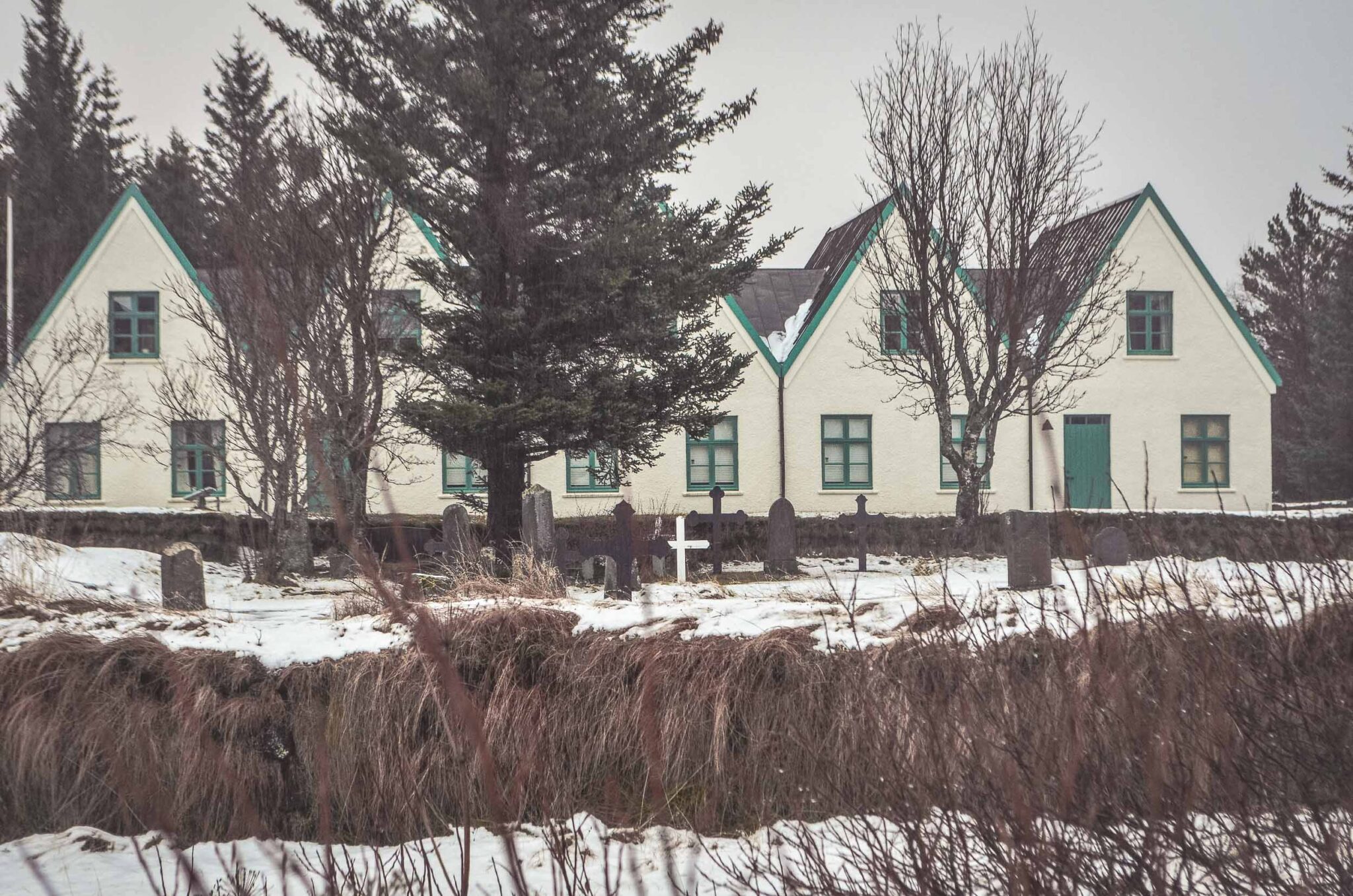Highlights Golden Circle Iceland
As the sun sets, the roads in Iceland are slowly getting covered in snow. Despite the intense geothermal activity, we decide to make a detour and visit one of the most popular attractions in Iceland – the Gullfoss waterfall. We realize that the sun has already set when we look at the photos we took. Luckily, we are staying nearby and can always come back. Visiting the Golden Circle in Iceland during winter requires some adjustments, but it also offers a stunning landscape covered in bright white snow, creating a beautiful contrast with the geysers, mountains, and waterfalls. Here are some tips for the route and must-see attractions on the Golden Circle in Iceland, including how much time you need and what to expect during winter.
Golden Circle from Reykjavik
Starting from Reykjavik, there are various tours that take you to the Golden Circle, but it’s much more enjoyable to explore the route on your own and take your time. While most people start from Reykjavik and drive the Golden Circle clockwise, we drove from the south in the opposite direction. We spent the last few days of our road trip in Iceland visiting the attractions on the Golden Circle.
Highlights Golden Circle Iceland
Driving from the south, we didn’t complete the whole route in one go. We had already driven the section from Selfoss to Reykjavik earlier that week. You can choose to drive the Golden Circle clockwise or counterclockwise, and if you take the latter, you will come across the following highlights:
Kerid Crater
Before our trip to Iceland, I had read mixed reviews about the Kerid Crater, some positive and some not so much. As our route from Gulfoss literally passed by the crater, we couldn’t miss it. The snow that we saw the past few days had melted, but it was still a natural wonder that was worth visiting. The red hues against the blue water make for a stunning sight. The water is quite deep when you walk around the crater, but you can also get a closer look. It’s quite surreal to stand at the bottom of the crater. There is a small fee to enter and explore.

Skalholt Church
Not a natural wonder like the rest of the attractions on the route, but a beautiful church nonetheless. This place used to be a significant social and religious center, with Iceland’s first school and important religious events taking place here, as well as earthquakes that destroyed the village. The 30-meter-tall church has been standing here since 1963, and when combined with the white snow, it’s a sight to behold.
Strokkur Geysir
In the highly active Haukadular area, there are several geysers and hot springs in close proximity. It was my first time seeing a geyser erupt, and it was a fantastic natural phenomenon. I couldn’t help but watch it multiple times. Strokkur erupts every four to eight minutes, and the bubbling hot springs are also a beautiful sight. Take some time to appreciate it. And if you’re lucky enough to have a clear blue sky, wait for the sunset – it’s worth it.

Gulfoss
Another fantastic natural wonder just a short distance from the geysers. One of the most popular waterfalls in Iceland, it looks different in each season. The water thunders down in two stages, dropping about 32 meters. In winter, you are limited to following the designated paths, which were covered in snow during our visit. I had strapped on spikes to my shoes, which came in handy as we slipped and slid our way to the edge to admire the waterfall.

Thingvellir National Park
We drove on snowy roads to Thingvellir National Park. It was lightly raining, but the snow was still on the ground. The park holds great significance in Icelandic history and marks the separation between the North American and Eurasian continents. When we arrived, so did the tour buses from Reykjavik. The advantage of this was that they have a strict schedule and couldn’t spend too much time at each attraction. We took a walk to the Oxarafoss waterfall, and as the tourists left, the area became quieter. The roads, however, became more slippery. Along the way, you will also come across Logberg, the place where important decisions were made in the past. We also stopped by the small church and Sifra Gorge, where you can even go diving in the winter. It’s quite fascinating to see.

How much time do you need for the Golden Circle?
How much time you need to spend on the Golden Circle depends on the season you visit Iceland. You can visit all the attractions in one day, as offered in day tours. However, it’s more enjoyable to take your time. You’ll notice that the attractions are less crowded once the tour buses leave. It’s possible to stay overnight near Gulfoss, which is a good option. This way, you have more
What is the Golden Circle like in Iceland in winter?
The Golden Circle is one of the easiest nature reserves to visit from Reykjavik. There are several tours going that way. In the summer, with the long days, a great day trip. In winter it is not possible to visit this in one day. Certainly not if you want to take your time to see the sights. Therefore, choose an overnight stay nearby. Weather conditions can also be a lot worse in winter. With that extra day you have an escape to see something again. I visited Iceland in winter and this was the only area with snow at the time. This can also mess up your planning. Although the snow also gives the Golden Circle something magical. Not an unnecessary luxury for when you go for walks, spikes. Ideal against slipping along the way.
Spend the night at the Golden Circle Iceland
Because of the short daylight we decide to spend the night at the Gullfoss Hotel. Between the geysers and the Gullfoss you will find this hotel, which is an excellent base for two days at Golden Circle. The hotel was quite new at the time and had the option for dinner and breakfast.


